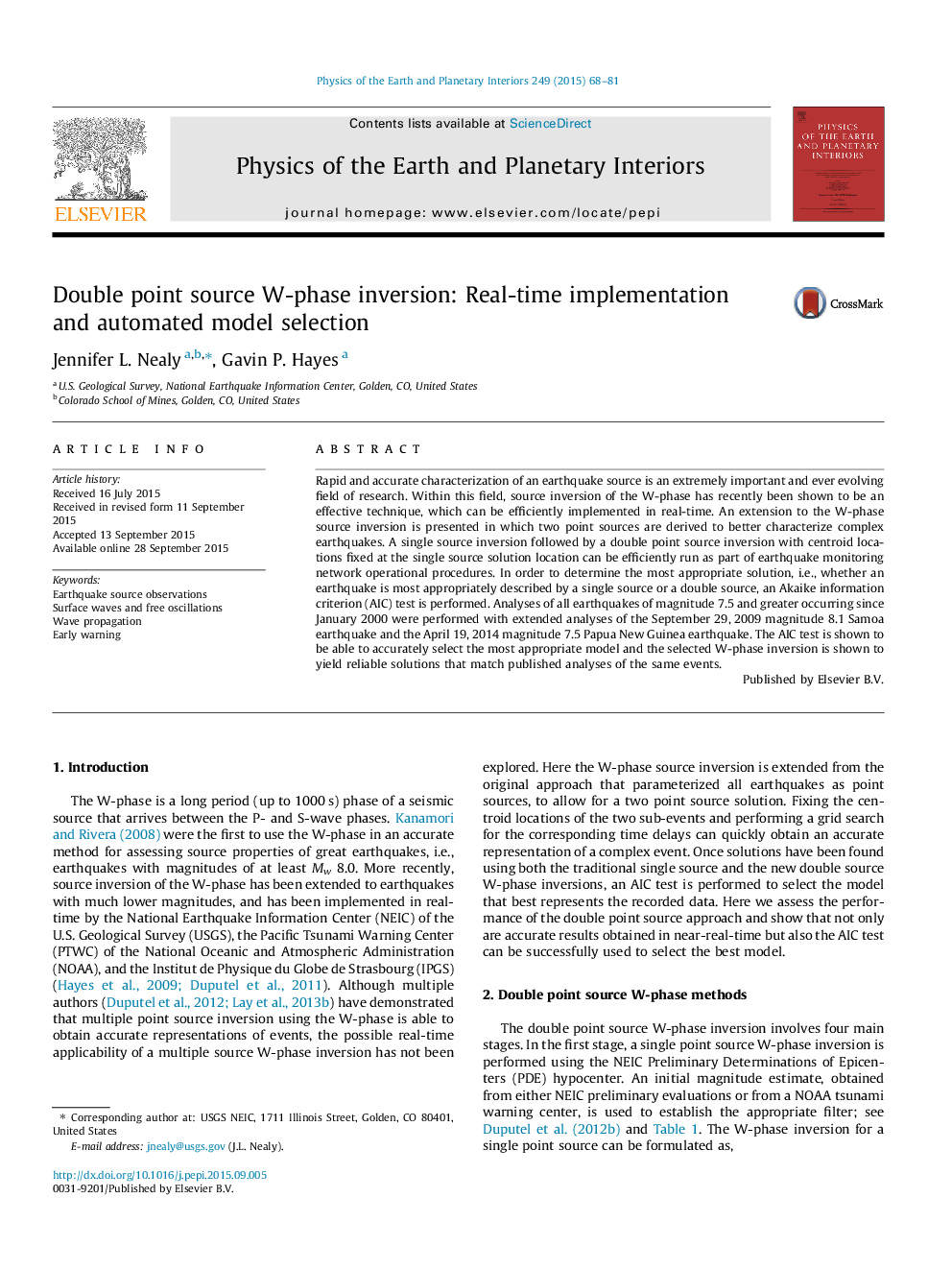| Article ID | Journal | Published Year | Pages | File Type |
|---|---|---|---|---|
| 4741441 | Physics of the Earth and Planetary Interiors | 2015 | 14 Pages |
•We present a W-phase double source inversion to characterize complex earthquakes.•An Akaike information criterion test selects the most appropriate earthquake model.•All events of magnitude 7.5 and greater occurring since January 2000 are analyzed.•Extended analyses of the 2009 Samoa and 2014 Panguna earthquakes are performed.•Double source W-phase inversion accurately characterizes earthquakes in realtime.
Rapid and accurate characterization of an earthquake source is an extremely important and ever evolving field of research. Within this field, source inversion of the W-phase has recently been shown to be an effective technique, which can be efficiently implemented in real-time. An extension to the W-phase source inversion is presented in which two point sources are derived to better characterize complex earthquakes. A single source inversion followed by a double point source inversion with centroid locations fixed at the single source solution location can be efficiently run as part of earthquake monitoring network operational procedures. In order to determine the most appropriate solution, i.e., whether an earthquake is most appropriately described by a single source or a double source, an Akaike information criterion (AIC) test is performed. Analyses of all earthquakes of magnitude 7.5 and greater occurring since January 2000 were performed with extended analyses of the September 29, 2009 magnitude 8.1 Samoa earthquake and the April 19, 2014 magnitude 7.5 Papua New Guinea earthquake. The AIC test is shown to be able to accurately select the most appropriate model and the selected W-phase inversion is shown to yield reliable solutions that match published analyses of the same events.
